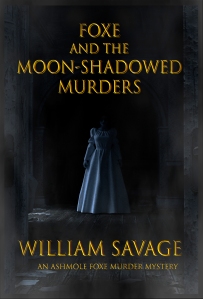
On a recent visit to Edinburgh, my wife and I visited The Georgian House in Charlotte Square. It’s a late-Georgian townhouse, wonderfully preserved, furnished and displayed by The National Trust for Scotland. During our visit, we spotted the early Regency home medical chest pictured above. That set me wondering what such chests usually contained. Most families would need to dose themselves, rather than call in an apothecary or physician for every minor illness. What did they have at hand?
Looking at the chests that remain today, plus their labelled bottles, reveal daily medical treatments of the time. I have tried to list typical contents in a rough order starting from those still in use today. Next come items superseded, because we can do better. Finally there are those that are downright dangerous and either banned altogether or only available under strict medical supervision.[1]
Items still in use today
- Calcium carbonate and Magnesium carbonate (Epsom Salts) as antacids.
- Essence of Peppermint for flatulence.
- Calcined Magnesia as antacid and mild laxative.
- Clove essence for toothache.
- ‘Fever Powder’ containing Quinine Hydrochloride.
- Castor oil as a laxative.
- Ipecacuanha Wine (usually sherry) as an emetic and expectorant.[2]
Superseded
- Zinc Sulphate as an emetic or astringent lotion.
- Tar to make ointments.
- Rhubarb powder as a laxative.
- Camphorated Hartshorn (Ammonia) and Oil for constipation and as a liniment with almond oil.
- Essence of Camphor for flu, cholera or feverish colds.
- ‘Spirit of lavender’ (lavender oil in alcohol) for cases of ‘depression, sickness and languor’.
- Tartar Emetic: Antimony and Potassium Tartrate used as an emetic and purgative. Its effect would have been violent, since it irritates the mucus of the gastrointestinal tract. Antimony itself is a metal and is not usually absorbed by the body.[3]
Downright Dangerous!
- ‘Grey Powder’: Mercury with chalk as purgative.
- ‘Red Precipitate’: Red mercury oxide used as local antiseptic for syphilitic lesions and in eye ointments.
- Laudanum (Alcoholic Tincture of Opium) as an analgesic.
- Chloroform for the relief of colic and in cough mixtures. Not used as an anaesthetic till 1860.
- ‘Paregoric’: tincture of Camphorated Opium used in cough mixtures.
- Vitriolic Acid (Sulphuric acid) used diluted with Peruvian Bark (the raw source of quinine), brandy and essence of orange to make a medicine for fevers.
Patent Medicines
Many cabinets also contained patent medicines. These were usually sold with little or no information about the ‘secret’ ingredients used in them. It’s easy to dismiss all as fraudulent quackery, but it’s clear that most of those who made and sold them had an honest belief in their efficacy. Without scientific trials of any kind, all evidence for effectiveness had to be anecdotal. Of course those who peddled these items naturally seized on anything positive. Even so, given the high cost of medical attention at the time they might offer some prospect of help.
One common example was ‘Steers’s Opodeldoc’, a liniment rub made from soap, spirit of wine (pure alcohol), camphor, rosemary oil and sometimes spirit of ammonia. Others included such weirdly named substances as Daffy’s Elixir Salutis for ‘colic and griping’, Dr. Bateman’s Pectoral Drops for chest pains and lung complaints and John Hooper’s Female Pills for menstrual pains. J. Collis Browne’s Chlorodyne was still available over-the-counter when I was a child!. It claimed to cure coughs, colds, colic, spasms, bowel pains, stomach aches and sleeplessness. Its ingredients included morphine, chloral hydrate and cannabis. Even if it didn’t work in an scientific sense, it must have had quite an effect. People gave Godfrey’s Cordial, also known as Mother’s Friend, to fractious children to quiet them down. It contained opium, water and treacle. Dinneford’s Gripe Water for babies contained magnesia, but also a hefty slug of alcohol.
There were patent medicines which claimed to cure all the common illnesses of the time. They were marketed via newspaper advertisements full of extravagant claims. Apothecaries sold many of them, but they were not alone. Many booksellers offered them as a sideline, as did postmasters, goldsmiths, grocers and tailors.
Patent medicines often relied on analgesic and narcotic ingredients, such as opium, morphine and alcohol. These would provide pain relief at least. There might also have been a strong ‘placebo effect’. Given that the orthodox remedies of the time tended to be at least as unpleasant and barely any more useful, it’s not surprising they were popular. Eventually, during the later nineteenth century, the medical profession and various temperance reformers managed to suppress a large part of the trade. This was not so much because of the lack of evidence of cures. The main concern was that so many of these medicines contained alcohol, as well as other ingredients that induced dependency.
- Based on common usage in the UK. Other jurisdictions may differ. ↩
- Syrup of ipecac, commonly referred to as ipecac, is obtained from the dried rhizome and roots of Carapichea ipecacuanha. It is poisonous, but taken diluted produces retching and vomiting. ↩
- ‘Cathartic pills’ made of antimony were the ultimate in recycling. Once swallowed, they passed through the gut, were recovered from the faeces, and then re-used many times! ↩
 William Savage writes historical fiction set in eighteenth-century Norfolk in the years between 1760 and 1800. This was a period of turmoil — constant wars, the revolutions in America and France and finally the titanic, 22-year struggle with Napoleon. The series featuring Dr Adam Bascom, a young gentleman-physician caught up in the beginning of the Napoleonic wars, takes place in a variety of locations near to the North Norfolk coast. The Ashmole Foxe series is located in Norwich. Mr Foxe is something of a dandy, a bookseller and, unknown to most around him, quickly involved in dealing with anything likely to upset the peace or economic security of his beloved city. You can check out both series here.
William Savage writes historical fiction set in eighteenth-century Norfolk in the years between 1760 and 1800. This was a period of turmoil — constant wars, the revolutions in America and France and finally the titanic, 22-year struggle with Napoleon. The series featuring Dr Adam Bascom, a young gentleman-physician caught up in the beginning of the Napoleonic wars, takes place in a variety of locations near to the North Norfolk coast. The Ashmole Foxe series is located in Norwich. Mr Foxe is something of a dandy, a bookseller and, unknown to most around him, quickly involved in dealing with anything likely to upset the peace or economic security of his beloved city. You can check out both series here.



I wondered when you would get around to the medicines, William! Amazing how many had some narcotic content or effect! Ipecac was still being used when I was a child (I believe I had the experience!) My grandmother used to use mustard plasters for colds (one of her patients ate it rather than put it on their chest, but claimed it worked wonders!) and scraped mold from the barn door to treat various things. Maybe I have herbalist genes?
LikeLike
Yes, I can recall being given gripe water (probably gave me my taste for gin) and seeing Collis-Browne’s Chlorodyne advertised in the newspapers. Happy days!
LikeLike